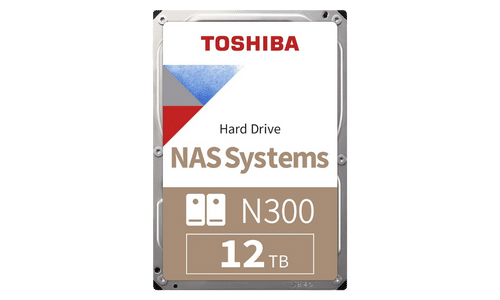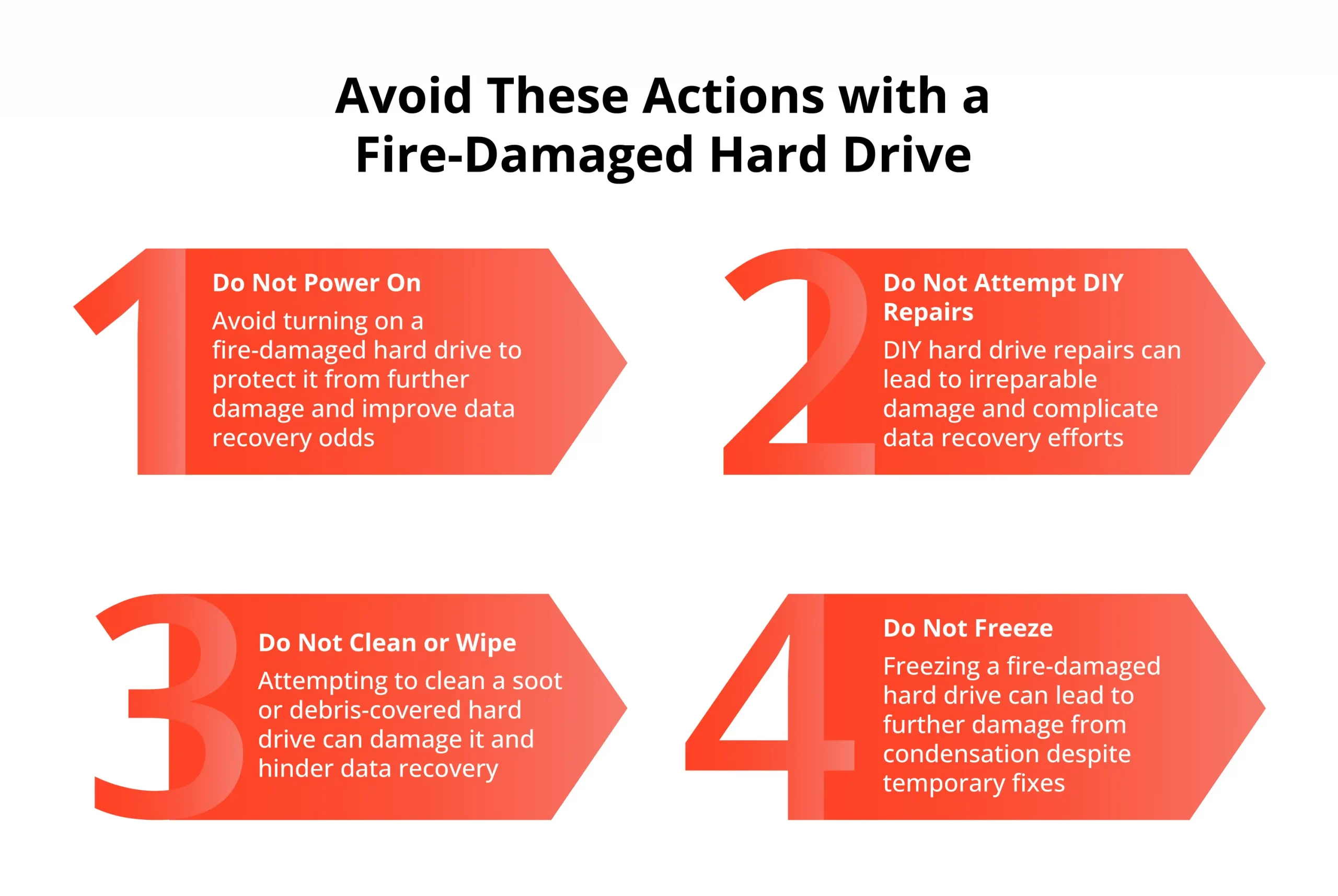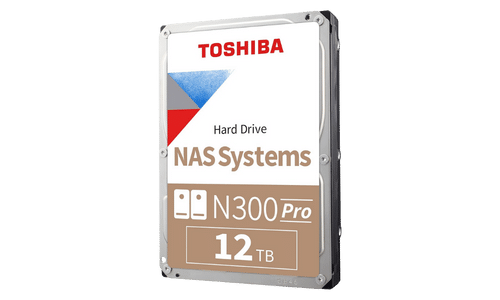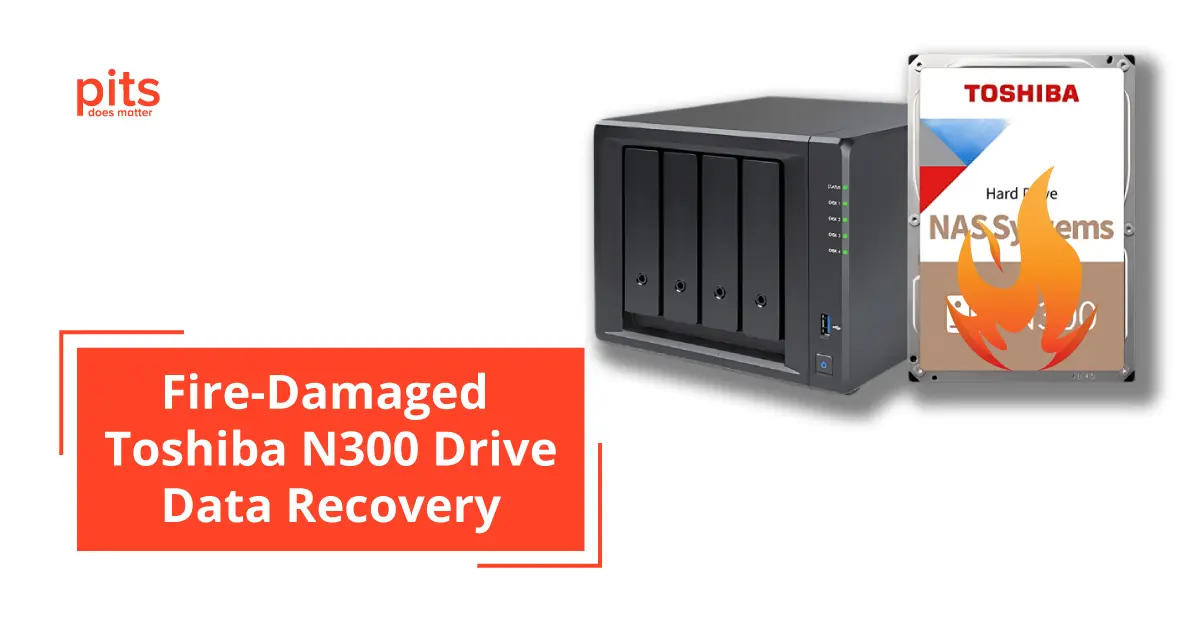In our recent case, the technology company’s catastrophic data loss underscored several key vulnerabilities in corporate data management and infrastructure maintenance. Toshiba N300 hard drives were identified as the failing components, with the root cause traced back to an electrical fault leading to severe overheating. In this discussion, we will explore how our engineers addressed this challenge and successfully recovered all the data for the technology company.
Background of Fire-Damaged Toshiba N300 Hard Drives
A technology company experienced significant data loss due to a server fire, primarily caused by an electrical fault in a Toshiba N300 hard drive. Over time, a flaw in the hard drive’s power supply circuit failed to manage the electric current properly, leading to overheating.
The incident, where overheating led to a fire by setting nearby flammable materials alight, resulted in the destruction of several hard drives and a significant loss of data.
Following the tragic incident, the company director promptly sought expert help to manage the crisis fully. Given the urgency, fire-damaged hardware recovery experts were consulted.

We arranged for the secure transport of a damaged server to our lab for analysis and data recovery, providing a prepaid shipping label and instructions for safe shipment. This minimized further damage risk and optimized data recovery chances.
"*" indicates required fields
Evaluation Process of Toshiba N300 Hard Drives
Upon receiving the fire-damaged Toshiba N300 hard drives, our team of engineers began a thorough evaluation process. The primary objectives in this scenario were identifying the extent of the fire damage and optimal data recovery steps. After an in-depth examination, we confirmed that eight out of ten hard drives were physically damaged due to the fire.
Additionally, all of the hard drives had sustained significant heat damage, with melted and deformed components. Following the evaluation, we provided the technology company with a detailed quote for the data recovery process. The company reviewed our proposal and agreed with the pricing, giving us the green light to proceed with the recovery efforts.

Data Recovery Process of Fire-Damaged Toshiba Hard Drives
To begin the data recovery process, we first secured a clean room environment to prevent further contamination or damage to the affected hard drives. We then carefully dismantled each hard drive and extracted the physical platters, which contained the actual data. In some cases, we needed to replace damaged components with donor parts to restore functionality.

Once all necessary repairs were completed, we used specialized equipment and techniques to extract the data from the platters.
File Verification Session for All Recovered Data
After successfully recovering the important data for the company, including financial records, employee details, operational data, and proprietary software, we conducted a remote file verification session.
Following the successful data recovery and the comprehensive verification of all retrieved information, we initiated the process of transferring the salvaged data onto new storage devices provided by the technology company.
Conclusion
The successful recovery of data from the fire-damaged Toshiba N300 hard drives marks a significant achievement in the field of data recovery. It highlights the paramount importance of having a comprehensive disaster recovery plan in place.
By taking proactive steps to safeguard data, companies can minimize the risk of significant loss due to unforeseen disasters, thereby maintaining operational continuity, protecting sensitive information, and upholding their reputation among stakeholders. If you’ve encountered data loss due to hardware issues, disasters, or unforeseen events, reach out to us without delay.
Frequently Asked Questions
What is the most common failure reason for fire-damaged hard drives?
The most common failure reason for fire-damaged hard drives is an electrical fault that leads to overheating. This can cause the ignition of flammable materials nearby, resulting in a fire that severely damages the hard drive’s components and leads to data loss.
Can data always be recovered from fire-damaged hard drives?
While not all fire-damaged hard drives can fully recover their data, the success rate is significantly high with the right expertise and equipment. The possibility of recovery depends on the extent of the damage and the quickness of initiating the recovery process.
How long does the data recovery process take for fire-damaged hard drives?
The duration of the data recovery process can vary widely, from a few days to several weeks, depending on the severity of the damage, the number of drives involved, and the complexity of the recovery process.
What steps can companies take to prevent data loss from fire damage?
Companies can mitigate the risk of data loss from fire damage by implementing robust fire detection and suppression systems, conducting regular maintenance checks on electrical devices to prevent overheating, and, most importantly, maintaining up-to-date backups in physically separate locations.
Is it possible to recover data from melted hard drives?
Recovery from melted hard drives presents significant challenges but is not impossible. Success depends on the condition of the data platters inside the hard drive. If the platters are intact, there is a possibility to recover the data, although it often requires highly specialized techniques.
